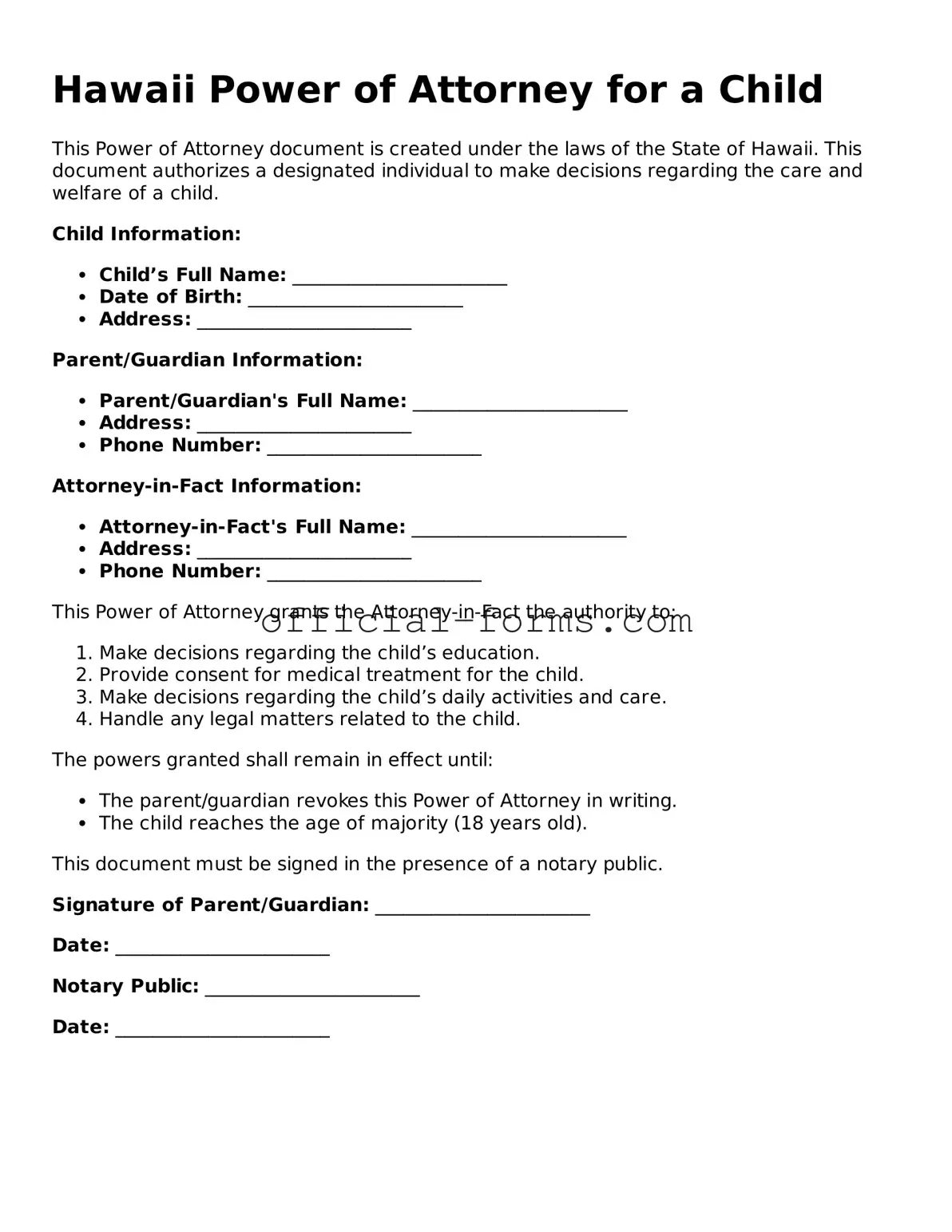When completing the Hawaii Power of Attorney for a Child form, individuals often make several common mistakes that can lead to complications. One frequent error is failing to provide complete information about the child. This includes not including the child's full name, date of birth, or other identifying details. Accurate information is essential to ensure that the document is valid and can be used effectively.
Another mistake involves not properly identifying the agent. The person designated as the agent must be clearly named, and their relationship to the child should be specified. Omitting this information can result in confusion regarding who has the authority to act on behalf of the child.
Some individuals neglect to sign and date the form. A signature is crucial for the document to be legally binding. Without a signature, the form may be considered incomplete and unenforceable. Additionally, failing to have the form notarized can also invalidate it, as notarization serves to verify the identities of the individuals involved.
Inaccurate or unclear instructions regarding the powers granted to the agent can create issues. It is important to specify what decisions the agent can make on behalf of the child. Vague language may lead to misunderstandings or disputes later on.
Individuals sometimes overlook the need to inform relevant parties about the Power of Attorney. This includes notifying schools, healthcare providers, and other institutions that may need to recognize the agent’s authority. Without this communication, the agent may face challenges when trying to exercise their powers.
Another common mistake is not considering the duration of the Power of Attorney. The form should clearly state how long the authority is granted. Failing to include this information can lead to confusion about when the agent’s authority begins and ends.
Lastly, people may not review the form for accuracy before submission. Simple errors, such as typos or incorrect dates, can undermine the document's validity. A thorough review can help ensure that all information is correct and complete.
